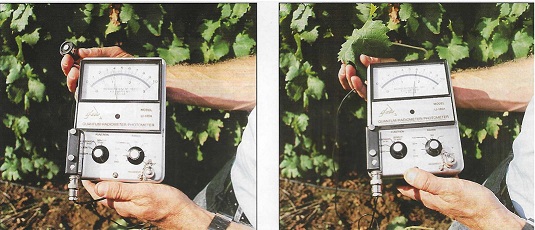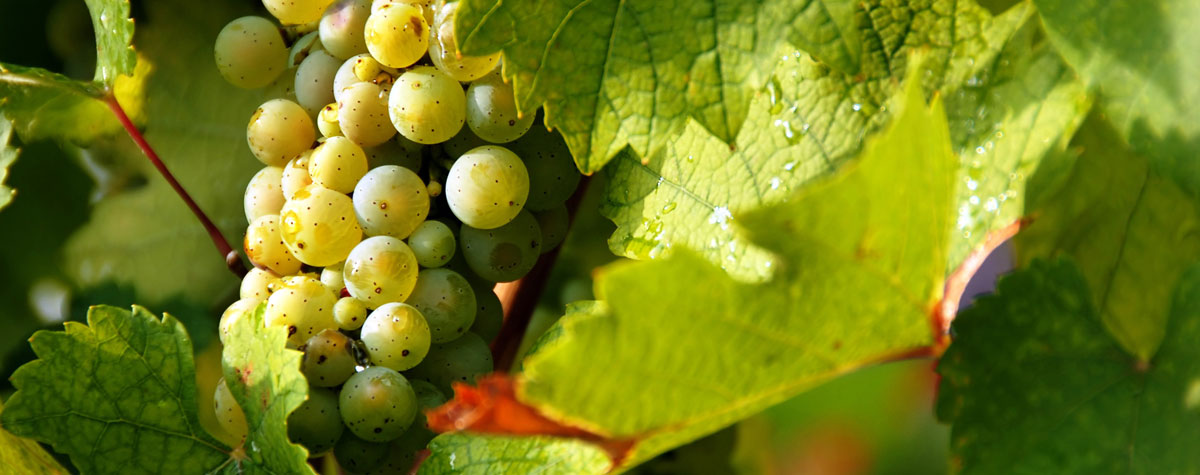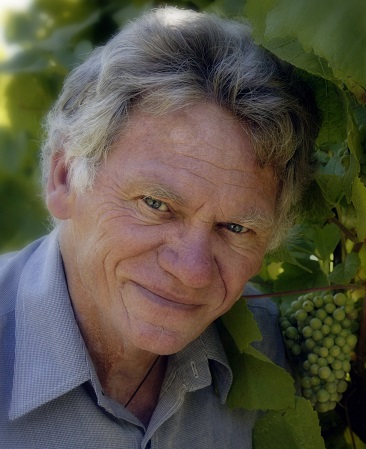Let us remember that we are mostly concerned with shading of leaves and grape bunches.
The reader’s question is a good one, and the answer is fairly simple for how much is too much shade. The shade of two leaves only is too much! And here we need to state a simple matter of fact. It is leaves which create shade in grapevine canopies. The trunk and cordon or head, and the bunches, while all are opaque, do not contribute much shade.
This comes down to a pretty simple calculation. The light used in photosynthesis is the same as the light we can see, so-called “visible” light. We know that for a leaf sitting in bright, direct sunlight, there may be 2,000 units of photosynthetically active radiation measured on the surface. Of this, about 10% will be reflected, and only 6% will be transmitted through the leaf. The balance, some 84% will be absorbed by the leaf, much of it by chlorophyll, providing energy to drive photosynthesis.

Figure 1: Reduction of sunlight by transmission through a canopy three leaf layers thick. The average photosynthetically active light transmission per leaf is only 6%.
This means a second leaf, immediately under the first, will receive only 120 units of photosynthetically active radiation (see Figure 1, above). Therefore, photosynthesis will be severely limited, and almost zero (see Figure 2, below). The maximum rate of photosynthesis found for vine leaves is at about one third the intensity of full sunlight, around 700 units. For a third leaf layer, the light level is only 7 units, not enough to produce photosynthesis. And in such a shaded climate leaves turn yellow, then brown and fall off.

Figure 2: Measuring leaf photosynthesis on a Cabernet Franc trellis trial, Hamilton, New Zealand.
‘The presence of yellow interior leaves indicates excessive canopy shade’
How about shade of bunches?
Similarly, if a bunch of grapes has one leaf layer between it and the canopy exterior, it will be undesirably shaded; if there are two leaf layers it is much too dark for the reactions depending on sunlight which affect berry composition and finally wine quality. The presence of yellow interior leaves indicates excessive canopy shade; the diligent enologist and viticulturist should always be on a lookout for them, as a warning signal that wine quality is already compromised.So how much shade is just right?
Many a day I have spent measuring sunlight in grapevine canopies; fortunately vinegrowers do not need to repeat this. I can give a few simple rules of thumb, based on my measurements, which allow a grower to make his own assessment, using nothing but his eyes, or maybe even a finger, to pull leaves aside while counting them.Visual canopy assessment
I spent part of the 1980 growing season studying vineyards in Bordeaux, with Dr Alain Carbonneau, then of INRA Bordeaux. We made some research to study the Cabernet Sauvignon canopies of famous and not so famous vineyards in the Graves region. We found, and no surprise to us, that the most distinguished vineyards (Premier Cru) had open canopies with no shading, and so a desirable level of leaf and bunch exposure.On the other hand, less well classified vineyards had more shading of leaves and bunches, due to more leaf area associated with higher vigour. We acknowledged this as a true “terroir” effect, and likely due to more available moisture and nutrients in the root zone. Again, we confirmed the relative sunlight exposure of leaves and bunches by thousands of “spot” measurements using a light meter.

Measuring transmission of photosynthetically active radiation through a single leaf layer. Left side, the sensor is exposed to full sunlight, reading 1100 units. Right side, the sensor is covered by a leaf, reading 60 units, or 5.5% transmission.
Simple ways to assess exposure or shading
Good news for the vinegrowers, you do not need to stand in a vineyard and measure light, leave that to the scientists. But you can learn from their experiences.Here are a couple of rules of thumb to help you in assessing exposure/shade. Of interest, they are taken from the Vineyard Scorecard presented in the 'bible' of canopy management, “Sunlight into Wine”, by R Smart and M Robinson, (1991).
The visual scorecard had its genesis in the Bordeaux study, when we realised that one could distinguish vineyard canopies able to produce high quality wine by a series of quantifiable observations, which I will describe in a future column.
For now, here are a couple of useful tips to assess the degree of shading in the fruit zone:
- There should be about 40% canopy “gaps”, when looking straight on at a vertical canopy, around the fruit zone and immediately above it. A “gap” is when you can see through the canopy. Have someone stand on the opposite side wearing brightly coloured clothes, not green. More than 40% gaps means you are losing sunlight; less than 40% means you risk shading. If less than 20% gaps, you have problems!
- There should be 40% to 60% of fruit exposed, standing looking at a vertical canopy. This value should be lower for west-facing canopy walls in a hot and sunny climate. It is common for the value to be much less than the ideal range on vigorous VSP; sadly, many growers improve this figure by too-excessive leaf removal. Remember, the best leaf removal is when you have to do none!













.png)






